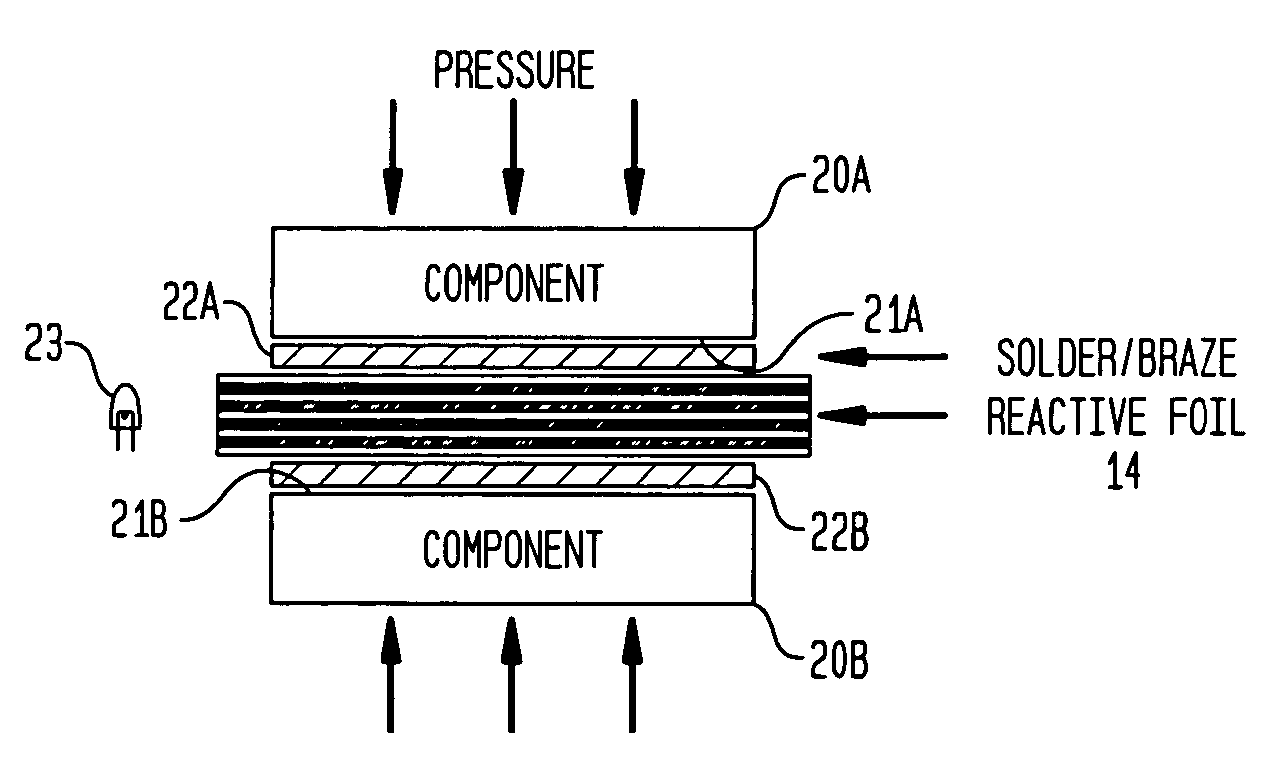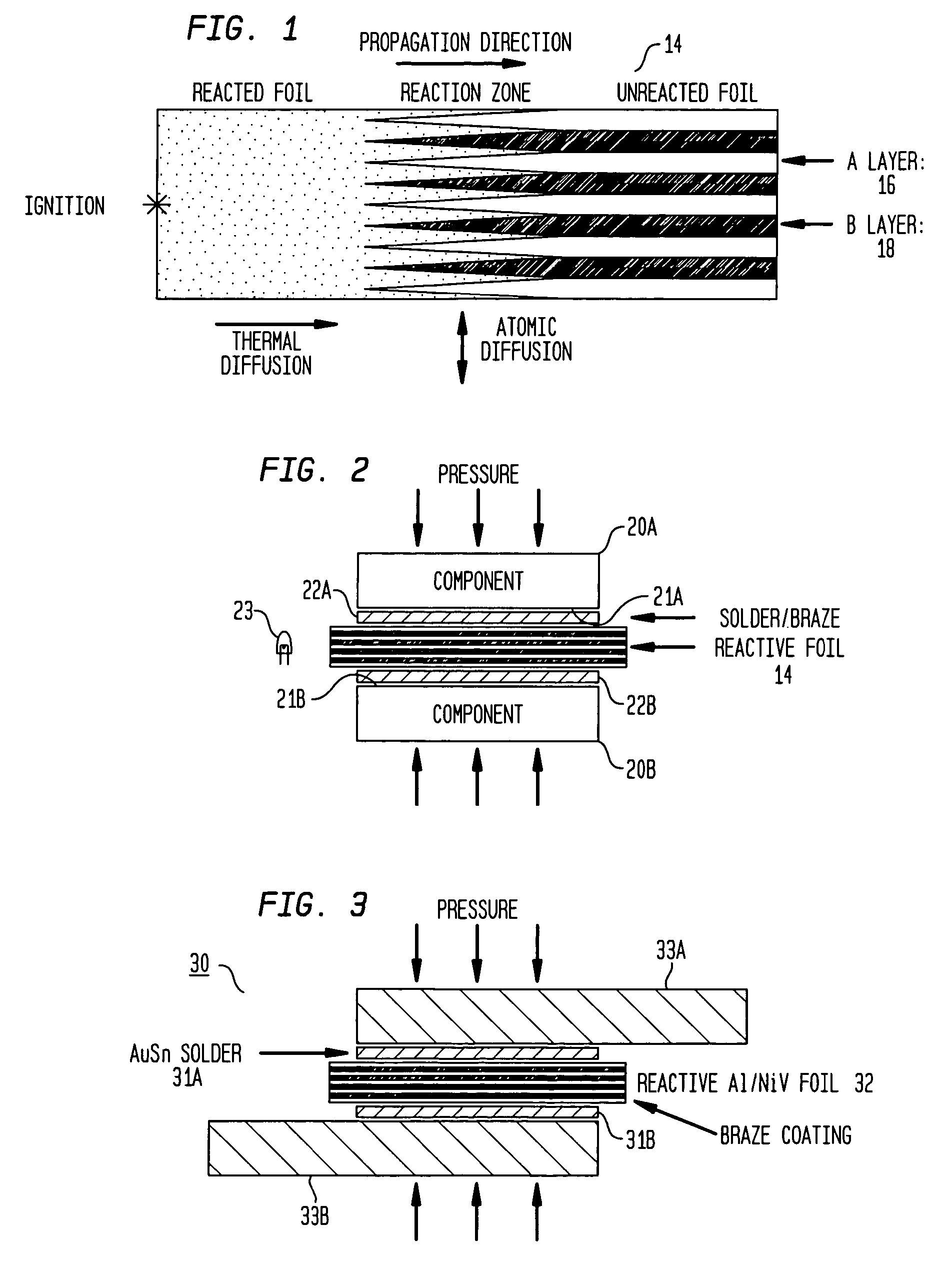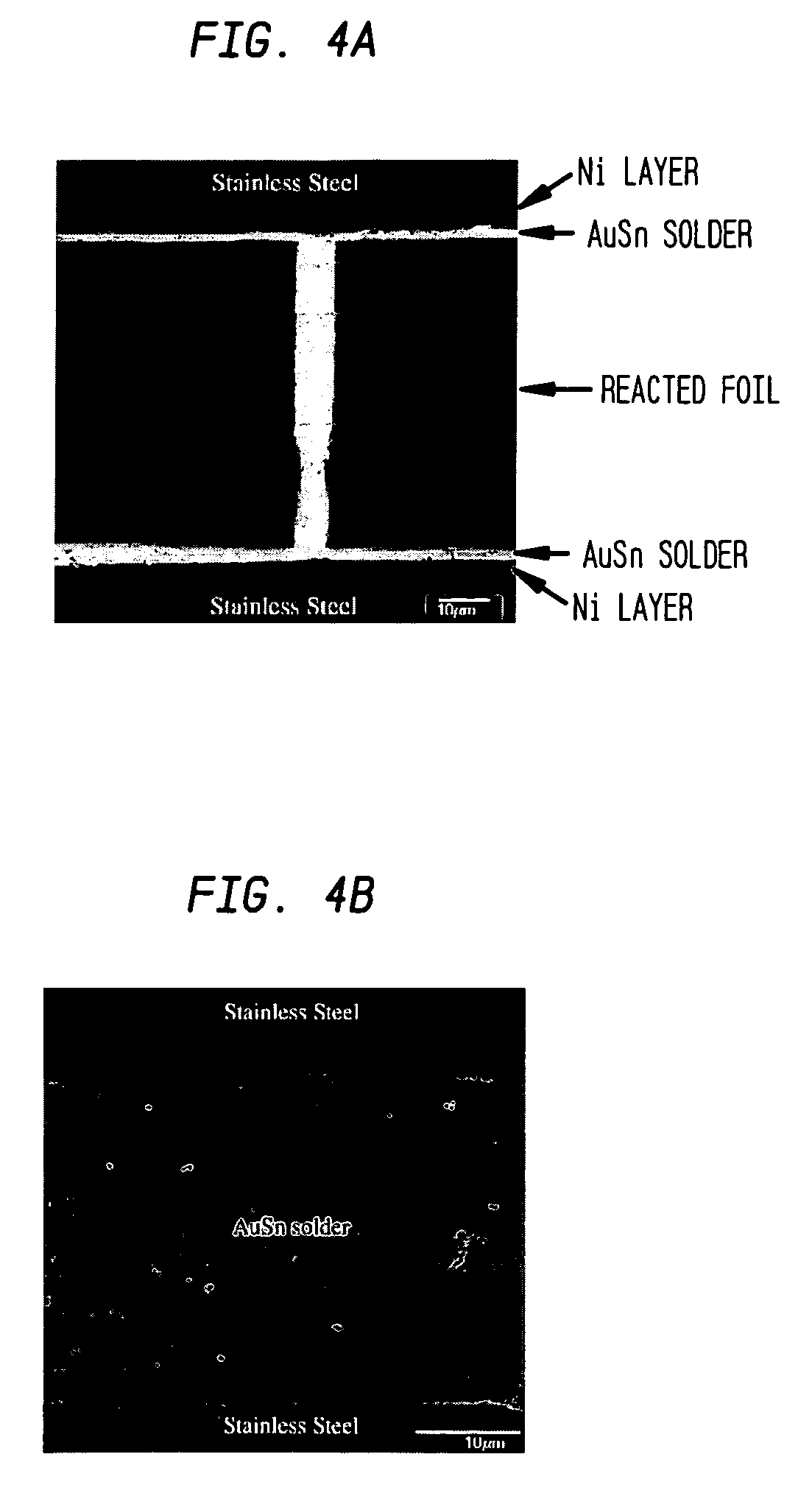Nanostructured soldered or brazed joints made with reactive multilayer foils
a multi-layer foil and soldering technology, applied in the direction of exothermal chemical reactions for heating, printed circuit assembling, non-electric welding apparatus, etc., can solve the problems of weakened mechanical properties, slow cooling of braze or solder, joint enlarged microstructure, etc., to slow down cooling, weakened mechanical properties, and enlarged microstructure
- Summary
- Abstract
- Description
- Claims
- Application Information
AI Technical Summary
Benefits of technology
Problems solved by technology
Method used
Image
Examples
Embodiment Construction
[0045]This description is divided into three parts. Part I describes and illustrates reactive foil joining and the resulting joints. Part II describes a thermal modeling technique useful optimizing reactive foil joining, and Part III exemplifies the application of the thermal model to produce superior joints. References indicated by bracketed numbers are fully cited in an attached List.
I. The Method And Resulting Joined Products
[0046]A. Multilayer Reactive Foils and Their Use in Forming Joints
[0047]Self-propagating exothermic formation reactions have been observed in a variety of nanostructured multilayer foils, such as Al / Ni, Al / Ti, Ni / Si and Nb / Si foils [1-4]. These reactions are driven by a reduction in atomic bond energy. Once the reactions are initiated by a pulse of energy, such as a small spark or a flame, atomic diffusion occurs normal to the layering.
[0048]FIG. 1 schematically illustrates a multilayer reactive foil 14 made up of alternating layers 16 and 18 of materials A a...
PUM
| Property | Measurement | Unit |
|---|---|---|
| thick | aaaaa | aaaaa |
| pressure | aaaaa | aaaaa |
| temperature | aaaaa | aaaaa |
Abstract
Description
Claims
Application Information
 Login to View More
Login to View More - R&D
- Intellectual Property
- Life Sciences
- Materials
- Tech Scout
- Unparalleled Data Quality
- Higher Quality Content
- 60% Fewer Hallucinations
Browse by: Latest US Patents, China's latest patents, Technical Efficacy Thesaurus, Application Domain, Technology Topic, Popular Technical Reports.
© 2025 PatSnap. All rights reserved.Legal|Privacy policy|Modern Slavery Act Transparency Statement|Sitemap|About US| Contact US: help@patsnap.com



